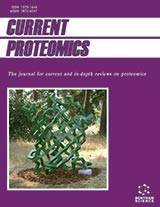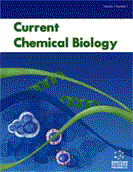Abstract
Ensemble learning is an intensively studied technique in machine learning and pattern recognition. Recent work in computational biology has seen an increasing use of ensemble learning methods due to their unique advantages in dealing with small sample size, high-dimensionality, and complex data structures. The aim of this article is two-fold. Firstly, it is to provide a review of the most widely used ensemble learning methods and their application in various bioinformatics problems, including the main topics of gene expression, mass spectrometry-based proteomics, gene-gene interaction identification from genome-wide association studies, and prediction of regulatory elements from DNA and protein sequences. Secondly, we try to identify and summarize future trends of ensemble methods in bioinformatics. Promising directions such as ensemble of support vector machines, meta-ensembles, and ensemble based feature selection are discussed.
Keywords: Ensemble learning, bioinformatics, microarray, mass spectrometry-based proteomics, gene-gene interaction, regulatory elements prediction, ensemble of support vector machines, meta ensemble, ensemble feature selection.
Current Bioinformatics
Title:A Review of Ensemble Methods in Bioinformatics
Volume: 5 Issue: 4
Author(s): Pengyi Yang, Yee Hwa Yang, Bing B. Zhou and Albert Y. Zomaya
Affiliation:
Keywords: Ensemble learning, bioinformatics, microarray, mass spectrometry-based proteomics, gene-gene interaction, regulatory elements prediction, ensemble of support vector machines, meta ensemble, ensemble feature selection.
Abstract: Ensemble learning is an intensively studied technique in machine learning and pattern recognition. Recent work in computational biology has seen an increasing use of ensemble learning methods due to their unique advantages in dealing with small sample size, high-dimensionality, and complex data structures. The aim of this article is two-fold. Firstly, it is to provide a review of the most widely used ensemble learning methods and their application in various bioinformatics problems, including the main topics of gene expression, mass spectrometry-based proteomics, gene-gene interaction identification from genome-wide association studies, and prediction of regulatory elements from DNA and protein sequences. Secondly, we try to identify and summarize future trends of ensemble methods in bioinformatics. Promising directions such as ensemble of support vector machines, meta-ensembles, and ensemble based feature selection are discussed.
Export Options
About this article
Cite this article as:
Yang Pengyi, Hwa Yang Yee, B. Zhou Bing and Y. Zomaya Albert, A Review of Ensemble Methods in Bioinformatics, Current Bioinformatics 2010; 5 (4) . https://dx.doi.org/10.2174/157489310794072508
| DOI https://dx.doi.org/10.2174/157489310794072508 |
Print ISSN 1574-8936 |
| Publisher Name Bentham Science Publisher |
Online ISSN 2212-392X |
 20
20
- Author Guidelines
- Bentham Author Support Services (BASS)
- Graphical Abstracts
- Fabricating and Stating False Information
- Research Misconduct
- Post Publication Discussions and Corrections
- Publishing Ethics and Rectitude
- Increase Visibility of Your Article
- Archiving Policies
- Peer Review Workflow
- Order Your Article Before Print
- Promote Your Article
- Manuscript Transfer Facility
- Editorial Policies
- Allegations from Whistleblowers
Related Articles
-
A Review on Novel Breast Cancer Therapies: Photodynamic Therapy and Plant Derived Agent Induced Cell Death Mechanisms
Anti-Cancer Agents in Medicinal Chemistry Indoleamine 2,3-dioxygenase (IDO): Biology and Target in Cancer Immunotherapies
Current Cancer Drug Targets Editorial [Human Methylome Variation and the Rise of Epigenetic Epidemiology]
Current Pharmacogenomics and Personalized Medicine Non-Steroidal LXR Agonists; An Emerging Therapeutic Strategy for the Treatment of Atherosclerosis
Recent Patents on Cardiovascular Drug Discovery Osteoporosis Requires Bone-Specific Statins
Current Pharmaceutical Design Psychological Sequelae of Ovarian Cancer Screening and Genetic Testing for Ovarian Cancer Susceptibility
Current Women`s Health Reviews Novel Antitumor Strategies Using Cytokine PEDF for Prostate Cancer Therapy
Current Angiogenesis (Discontinued) Nanostructured Systems for the Organelle-specific Delivery of Anticancer Drugs
Mini-Reviews in Medicinal Chemistry Long Non-coding RNA MALAT1 Inhibits Neuron Apoptosis and Neuroinflammation While Stimulates Neurite Outgrowth and Its Correlation With MiR-125b Mediates PTGS2, CDK5 and FOXQ1 in Alzheimer's Disease
Current Alzheimer Research Metformin Treatment Sensitizes Human Laryngeal Cancer Cell Line Hep- 2 to 5-Fluorouracil
Clinical Cancer Drugs MicroRNAs and the Warburg Effect: New Players in an Old Arena
Current Gene Therapy The Epigenetic Origin of Aneuploidy
Current Genomics Meet Our Editorial Board Member
Current Cancer Therapy Reviews Combined Anticancer Therapies: An Overview of the Latest Applications
Anti-Cancer Agents in Medicinal Chemistry LDH Nanocontainers as Bio-Reservoirs and Drug Delivery Carriers
Recent Patents on Nanotechnology Targeted Drug Delivery to Macrophages in Parasitic Infections
Current Drug Delivery Anti-cancer Therapies in High Grade Gliomas
Current Proteomics Editorial (Thematic Issue: Special Thematic Issue: Crossreactivity in Cancer and Autoimmunity)
Anti-Cancer Agents in Medicinal Chemistry Biomarkers to Assess the Targeting of DNA Repair Pathways to Augment Tumor Response to Therapy
Current Molecular Medicine Role of Aberrant Lipid Metabolism of Cancer Stem Cells in Cancer Progression
Current Cancer Drug Targets

















.jpeg)








